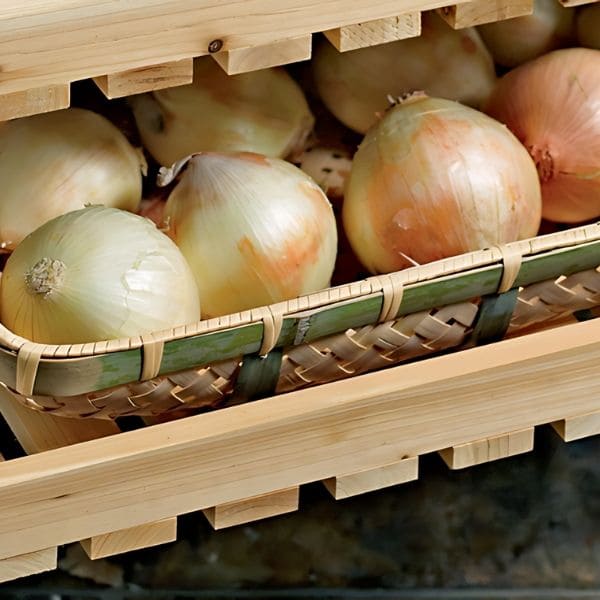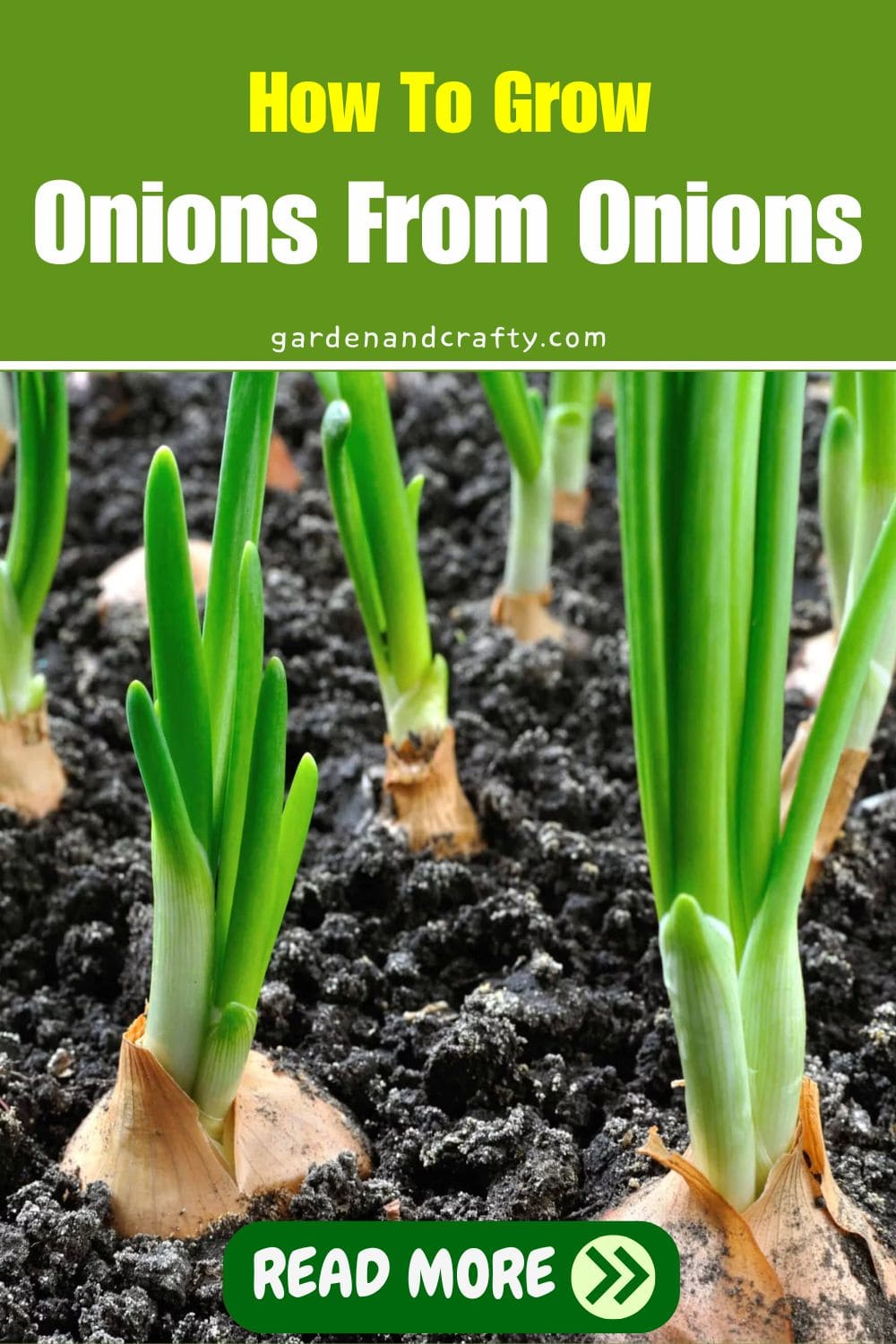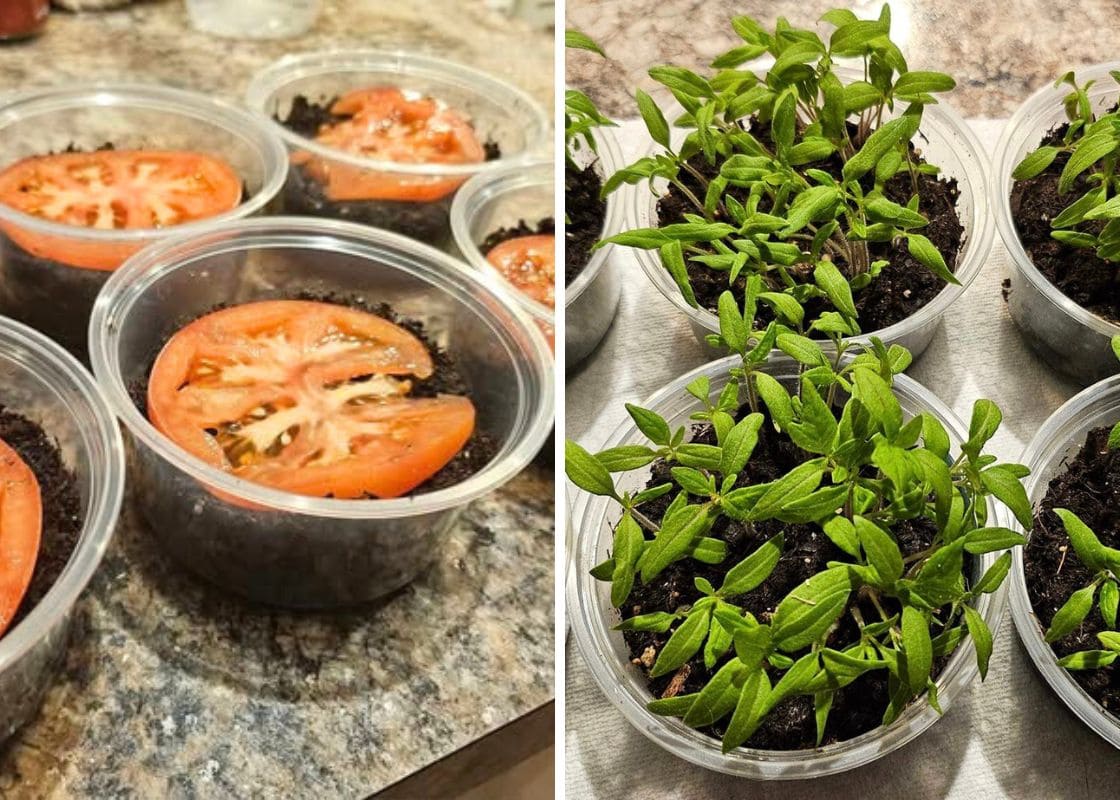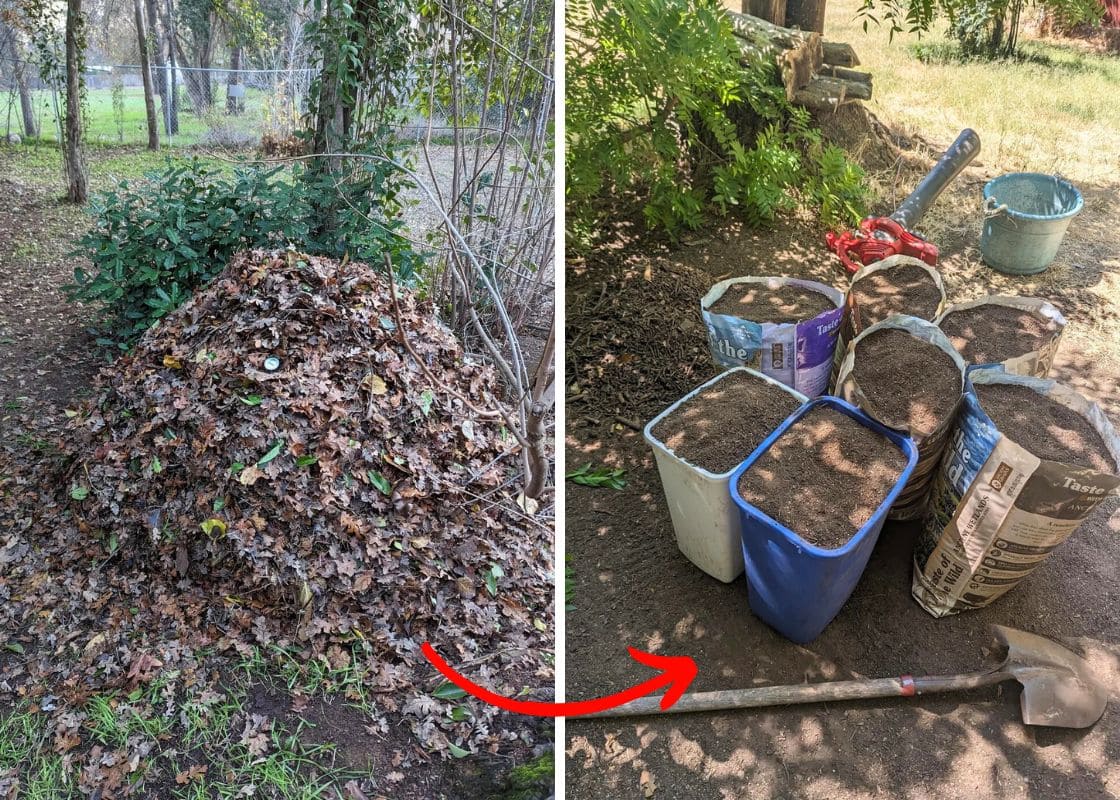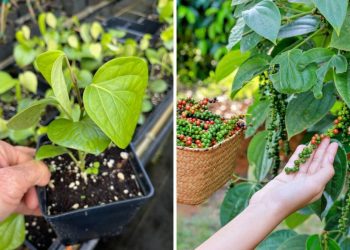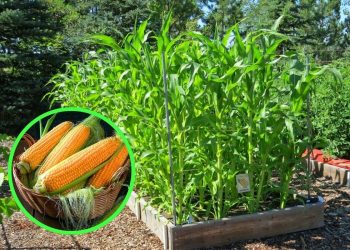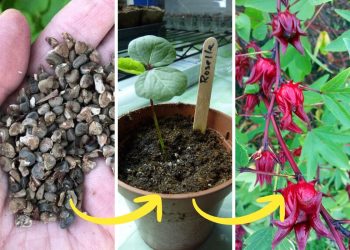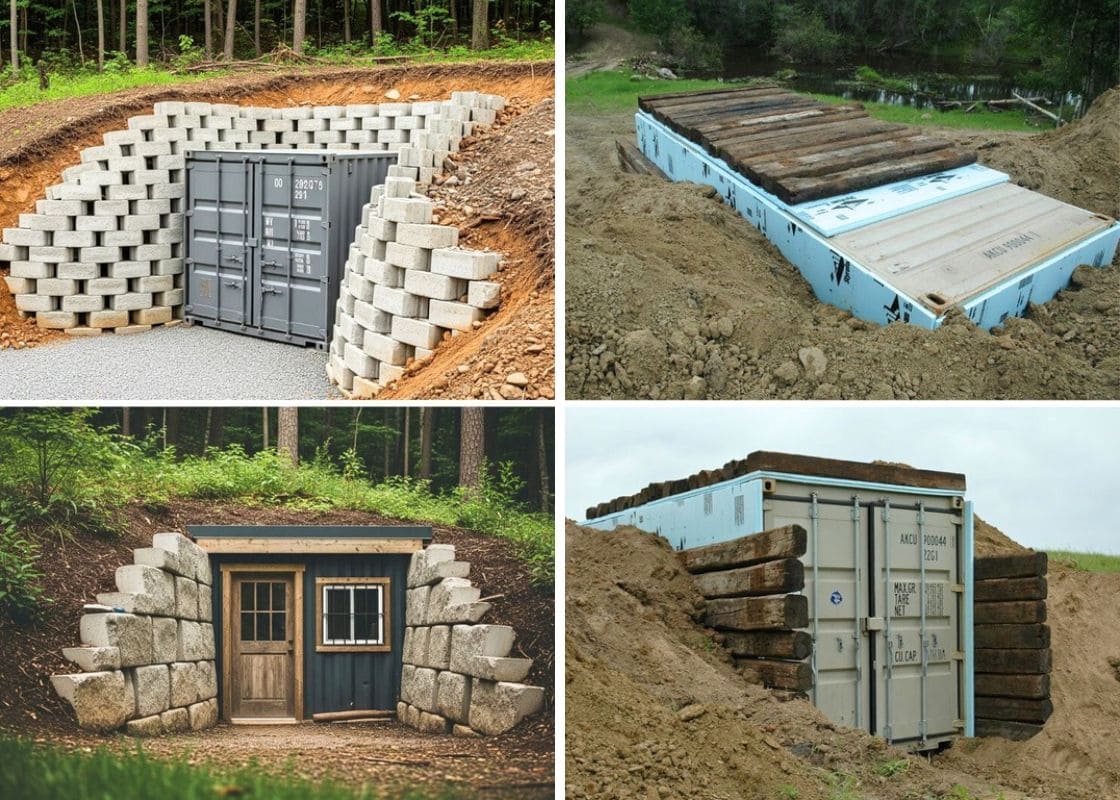Have you ever thought that you can plant onions without seeds? Yes, you can do it.
Onions are a staple in many dishes with remarkably resilient.
By cutting the bottom of an onion and planting it in soil, all gardening enthusiasts can enjoy their vegetables fast and conveniently.
Summary:
- You can plant onions from onions by cutting the bottom of an onion and planting it in soil.
- Ensure regular watering, sufficient sunlight, and proper soil drainage to grow new onion bulbs in 90-120 days.
- Harvest fresh leaves early, and mature bulbs once the tops yellow and fall over, then cure and store the onions for long-term use.

| Scientific name | Allium cepa |
| Common name | Yellow onion, red onion, white onion, sweet onion, green onion (scallion), shallot |
| Family | Amaryllidaceae |
| Height | 12 to 18 inches |
| Width | Up to 5 inches |
| Color | Yellow, red, white, green |
| Flavor | Mild, sweet and pungent |
| Light | Full sun |
| Soil | Well-drained |
Preparation
Tools
- Onion
- Cutting Board
- Clean, sharp Knife
- Glass of Water
- 4 Toothpicks
- Pot
Onion Cutting
Most onion varieties including those from grocery stores can be used for propagation.
You need to select a firm onion without signs of rot, mold, soft spots, or blemishes. The onion should have a dry, papery outer skin and feel solid when gently squeezed.
Next, carefully chop off the bottom of the onion, ensuring all roots remain intact and leave approximately 1.5-2 inches of the onion bulb attached.
This section often called the “meat” of the onion is where roots will sprout and develop.
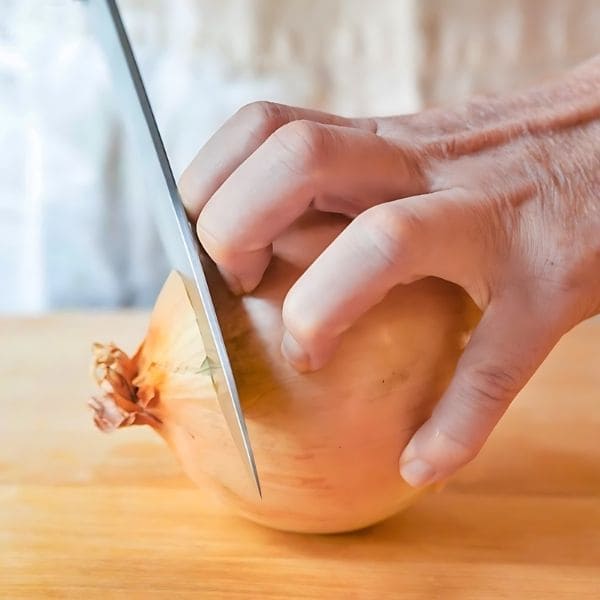
You should let the bottom of the onion dry for 12-24 hours on a flat surface with the cut side facing up. Of course, you can use the rest of the onion for cooking or composting.
Next, divide the onion bottom into four sections and insert toothpicks halfway into each side, spacing them evenly.
Hang the onion bottom over a small bowl of water so that the bottom just touches the water’s surface.
After that, place the setup in a sunny spot or near a sunny window. In about 3-4 days, you should see small, white roots growing from the bottom of the onion.
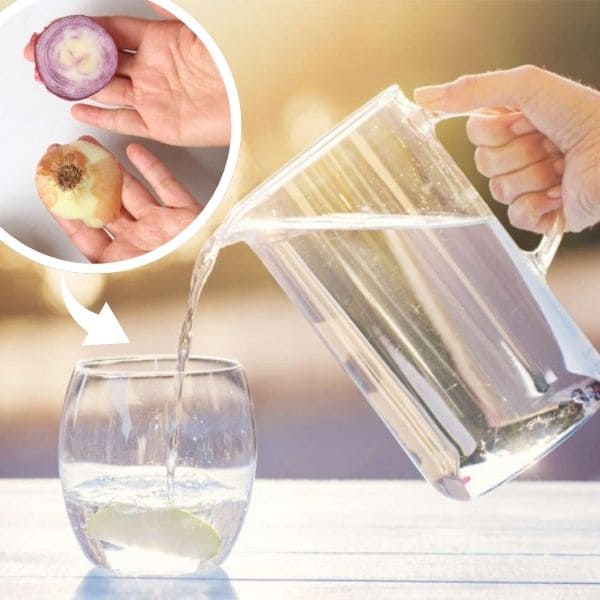
Potting Mix
You need to prepare a well-draining soil mix from a plant nursery, or mix equal parts garden soil, compost, and perlite or vermiculite.
To check if the soil drains well, dig a 12-inch (30 cm) hole and fill it with water. If the water drains away in 5-15 minutes, the soil is good for planting onions.
Next, you select a large pot with holes at the bottom and fill the pot two-thirds with the soil mix, ensuring it is evenly moist but not too wet.
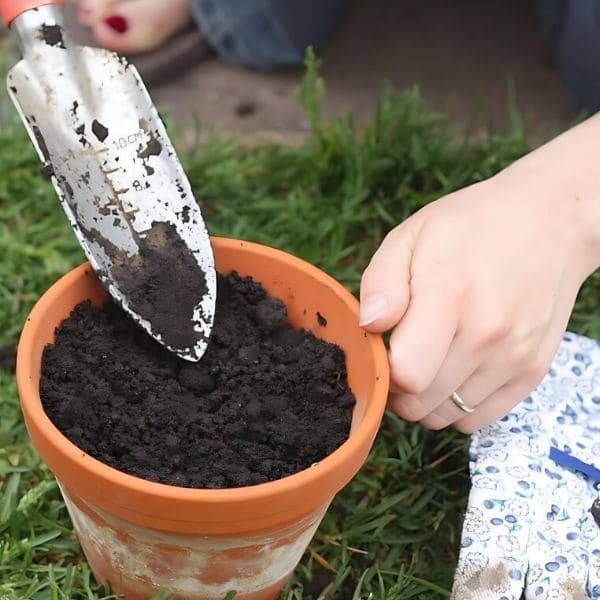
Growing Onions From Onions
You create a small indentation in the center to cradle the onion bottom, then place the onion cutting into the indentation with the roots facing downwards.
Cover the onion bottom with 1-2 inches of soil.
As the onion cutting grows, you may notice white roots developing from the bottom. Continue filling the pot with soil until it reaches about 1-2 inches from the top.
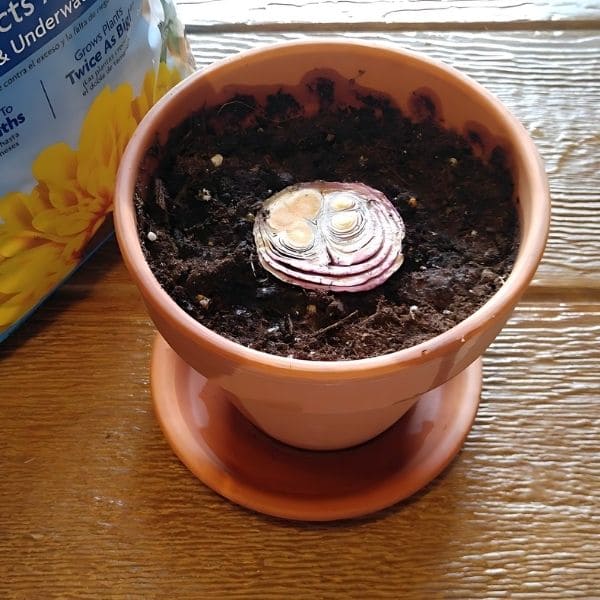
Care for Onions
Light
Ensure onions receive 6-8 hours of direct sunlight daily. Indoors, you need to place them near a sunny window or use grow lights and rotate pots for even exposure.
Partial shade can affect onion growth. In partial shade, onions may grow more slowly and produce smaller bulbs.
Soil
For healthy onions, you use well-draining soil with pH levels around 6.0 to 7.0 and keep soil consistently moist but not waterlogged.
In addition, you should add compost to enhance nutrients and improve soil structure.
Water
Once your onions are planted, you need to provide about 1 inch of water once a week.
It’s best to water them early in the morning or late in the afternoon to minimize evaporation and allow the water to penetrate deeply into the soil.
You can check the moisture level by gently feeling the top 2 inches of soil; if it’s dry, water until moist ensuring optimal conditions for healthy onion growth.
Weeding
You should check regularly and use your hands to gently pull out weeds around onions to prevent competition for nutrients and space.
Also, mulching lightly can help suppress weed growth.
Fertilizer
At first stage, you need to fertilize onions every two weeks with a balanced fertilizer 10-10-10 to provide essential nutrients for leaf and bulb growth.
Once bulbs start emerging, discontinue fertilizing until harvest to ensure robust onion development.
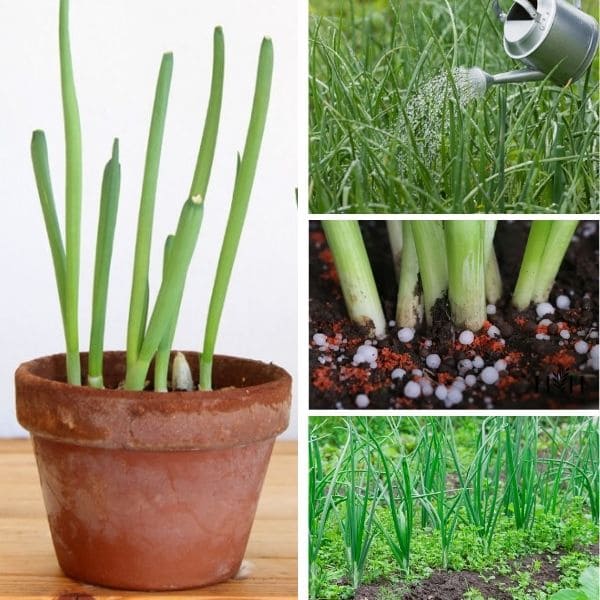
Pests and Diseases
Be vigilant against common pests such as onion thrips, aphids, and onion maggots, which can harm plants by feeding on leaves and bulbs.
Diseases like onion rot and downy mildew can also affect onions, causing discoloration and reduced growth.
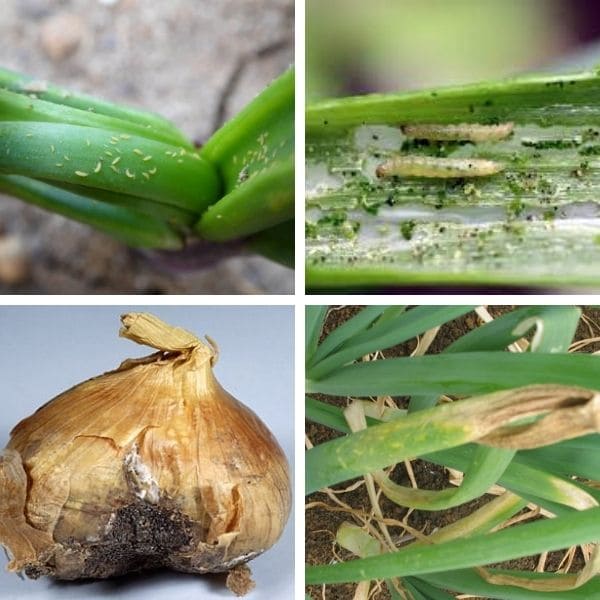
To combat these issues, use organic pesticides sparingly and ensure pots have good drainage and adequate air circulation.
Regularly inspect plants for early signs of pests or diseases to promptly apply appropriate treatments and safeguard onion health.
Common Problems
Yellow Leaves
Yellow onion leaves are caused by nutrient deficiencies or overwatering.
You need to ensure the soil has proper drainage and avoid excessive watering to prevent root rot and yellowing foliage.
Additionally, monitor soil nutrients and supplement with balanced fertilizer as needed to maintain healthy green leaves and promote robust onion growth.
Overcrowding
If multiple new onions sprout from a single bottom piece, it can lead to smaller bulbs.
To remedy this, divide the onion bottom carefully with a sharp knife, leaving enough roots and leaves on each section for robust growth.
Additionally, ensure each onion has adequate space and nutrients in the pot to promote healthy development and maximize yield.
Harvest
Fresh Leaves
When onion leaves reach about 3-4 inches, you can harvest them to add to your daily meals. Use a sharp knife to cut the leaves out of the base to prevent hurting the onions.
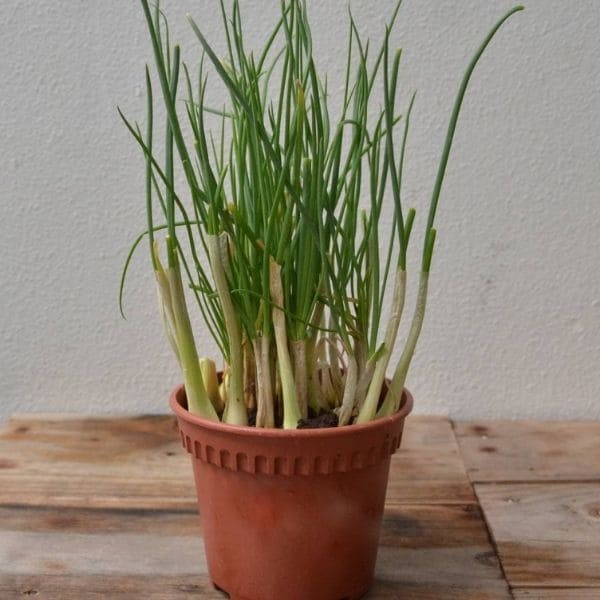
Onions
On average, onions grown from cuttings take about 90-120 days to form new bulbs.
When their tops have turned yellow and fallen over, you carefully loosen the soil around each onion and lift them from the ground.

Preservation
After harvest, you should trim the roots and tops and let the onions cure in a warm, dry place with good airflow for about 2 weeks.
Next, store the cured onions in a cool, dry area with adequate ventilation, such as in a mesh bag or crate.
You also need to check regularly for signs of spoilage and use promptly.
